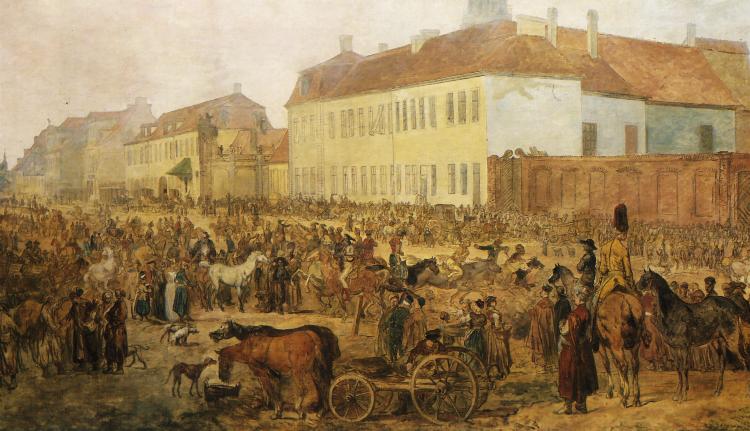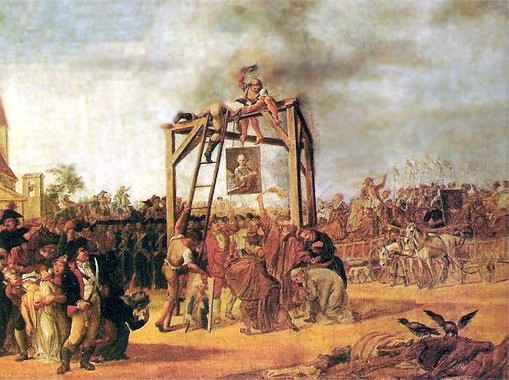
Reserved Area
Artists - ArtWorks
Jan Piotr Norblin
 Poland
PolandThe Sovereignas Palaces and Their Paintings
The material gives the precise analysis of the factors influencing the artistic size of the epoch and its trends. It can be used as a compendium, and a scope of ideas casting a light on the Norblin’s innovation and his deep dedication towards the form of the elaborated visionary composition and components.
Jan Piotr Norblin, born as Norblin de la Gourdaine (1745-1830)- a French painter, drawer, graphic , who was acting in Poland within the years: 1774-1804. He was educated in Paris, in the workshop of a battlefield pictures’ master- F. Casanova and in the Paris Academy.
He was acting in the service of the Duke Adam Czartoryski and his wife Izabela, accepting and executing various orders during his staying in Poland, and in keeping with this getting more and more engaged in the Poland’s historical processes.
His versatility and dedication both considered in service for the noblesse and the Royal State resulted in awarding him with the title of a nobleman.
He was both a great decorator, creating a beautiful plafon “Jutrzenka” in Arkadia close to Nieborow, and a creative author of memorable scene paintings, historic events dedicated to Poland’s important days, e.g. battlefields, ceremonies, etc.
Jan Piotr Noblin had an opportunity to observe the Poland’s Constitution Act, and the events corresponding to the Kosciuszko’s Insurrection- taking into the eternal national heritage the very dramatic days- as the battle of Raclawice, hanging the traitors, etc.
Corresponding to Canaletto and Bacciarelli who were acting in that period in Poland by the Polish King, Norblin’s pictures express more cognitive aspect of the not peaceful scenes, where the kinds of stage relations (stage relations painting) underline the character of the vision- an expressive charisma connected with participating in crucial and nurturing events.
The inspection of shy and monotonous vedutism is decisively far from Norblin, who concentrates on building up the atmosphere inset in the dramatic time of the Polish fortune.
It is so when we watch “The hanging the traitors”, or “The Fair on the Warsaw’s Prague”.
Norblin created an important group of his Polish follower, first of all the eminent creators of the open sceneries and stage relations painting, namely: Aleksander Orlowski, Michal Plonski and Jan Rustem.
Artistic analysis allows to situate Norblin as a very precise and sensitive observer of the Polish panorama’s realism, the break- through of those times greatly elaborated and evidenced, but he also appeared to be a real master of construing extraordinary space planning in the convention of the supernatural events and the scenery’s relations.
At first, Norblin figured rococo stages at the kind of: A. Watteau, F. Boucher and J.H. Fragonard.
His oil elaborations featured in rococo- fetes galantes were composed and profiled for the mansions, e.g. “The Fair in the Park”, “The Breakfast”, “Taking Bath in the Park”, “A Group during the Trip at the Lake”.
As an eminent graphic, Norblin was remaining under the influence of Rembrandt and his style’s counterparts, aiming at the aquafort technics.
Norblin was developing from the status of a decorator, an elaborated plastic manners’ designer towards the vital function of the Polish father of the genre called the stage relations painting, construing the whole picture of emotions and the city’s picture of life. He was also displaying a picture of the large scale Polish noblesse’s design and Polish patriotically orientated ceremonies- as in “The Polish Jaselka”. Norblin also comes back within the Poland’s history- he presents “The Giving the Crown to the Piast”, “Electing Przemyslaw the King”.
Jan Piotr Norblin perfectly evidences the historic relation, its timeline and its inspiration towards the artistic engaged vision and building up the atmosphere of the full vivid scenery of exceptional events
Historic albums, critical correspondences, texts dedicated to the Stanislaw August’s Scenery Painting Epoch
http://pl.wikipedia.org/wiki/Jan_Piotr_Norblin
http://www.zgapa.pl/zgapedia/Jan_Piotr_Norblin.html
http://artyzm.com/artysta.php?id=392
Related Material:
Image available

File name: 99_Targ na pradze J.P Norblin.jpg
Description of the material:
The material shows the Polish painting's catalogue of the widely understood historical engagement, its predilection towards recording the events, ceremonies, rituals existing within the discovered epochs.
Contextualisation Of the source:
The pictures fulfilled with the crowded stages signify the entire national character of the panorama, its sensual focus matching with the nation , its history and habits under the disguise of various costumes and collectively shared moods and spirits. http://artyzm.com/obraz.php?id=1047
Interpretation of the source:
The interpretation could be the setting on the national component of existence as the full size elaboration of the recorded chronicle- caring both for panoramic and detailed factors.

File name: 99_Wieszanie_zdrajcow.jpg
Description of the material:
The material gives a possibility of observing the artist as an illustrator of the Polish chronicle, the period of time fulfilled with the break- through, memorable events- still kept in our collective consciousness.
Contextualisation Of the source:
The context is the role of artist in the recording and dealing with our national historic scenery, critical cases, consequences of various political decisions, acts of determination, etc. http://www.weranda.pl/place/show/31/poznaj_mistrza/491/jan_piotr_norblin__kronikarz_ciekawych_czasow
Interpretation of the source:
The source can be interpretated as a treasury of art imposed on the pages of the national chronicle.
Comments about this Artist/ArtWork
Michelangelo - Copyright 2008 - This project has been funded with support from the European Commission